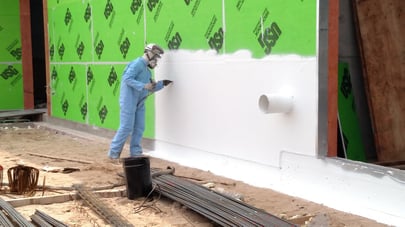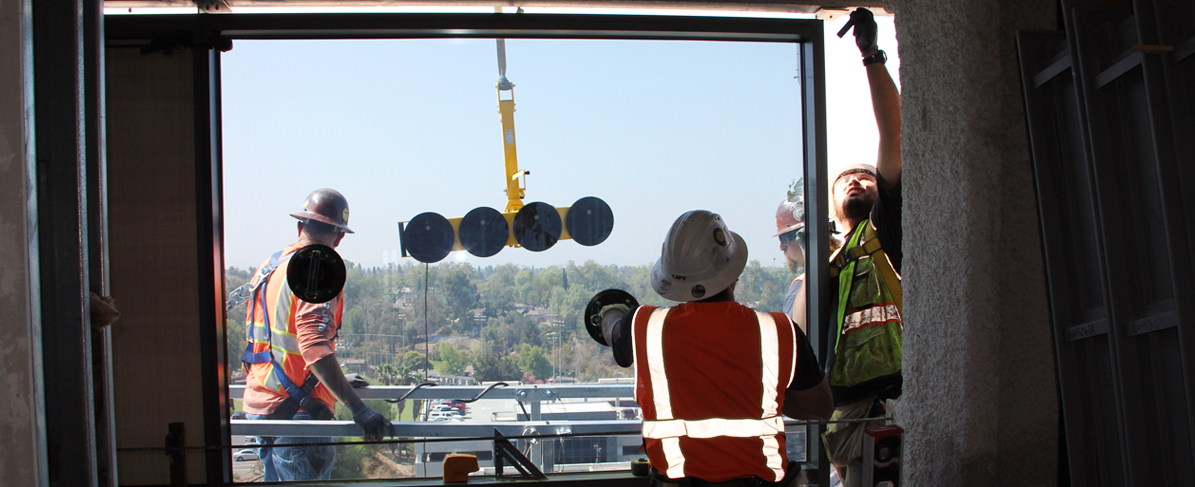"Building enclosure commissioning (BECx) is only about reducing the owner’s risks and comes with a high price tag." Misconceptions such as these abound when it comes to the BECx process. But design and construction teams may be surprised to learn that BECx can be their saving grace when it comes to finishing a project on schedule, within budget and with minimal rework and call-backs.
This only occurs, however, if the BECx process is followed and the process provider (BECxP) can collaborate during all phases of the project and among all members of the team.

What is BECx?
The BECx process is structured into five phases: Pre-Design, Design, Pre-Construction, Construction, and Occupancy and Operations Phase. In general, the objective of BECx in the Preconstruction and Construction phases is to provide documented confirmation that a facility fulfills the owner’s functionality and performance requirements as designed. Measures are included to ensure that the following steps have been taken:
- Deficiencies in the building enclosure design are identified during the Pre-construction and Construction phases.
- Building enclosure components are installed and perform collectively according to the building enclosure design intent (BEDI).
- The installation is adequately tested.
- The specified performance is verified and documented.
The Building Enclosure Commissioning Process Provider (BECxP) is the consultant who, serving as the objective advocate of the owner, implements and executes the BECx Process and typically leads the BECx Group (BECxG). They are involved throughout the project from pre-design to design and review, preconstruction, construction and testing through to the warranty phase.
A BECxP offers specialized knowledge about the six-sided cube that is the building enclosure, the environmental separators within the structure, and how it relates to and performs within the parameters of the mechanical system. He or she brings a knowledge base that is founded in building science and scientific performance, analysis and testing – a depth of expertise that very few design and construction professionals possess.
What’s in it for GCs?
For GCs, the BECx process is a way to reduce risk. Contractors are often faced with challenging or otherwise unrealistic deadlines, weather conditions, and product lead times – not to mention the numerous new products available and specified – which together create a greater chance of failing than succeeding when it comes to delivering a leak-free building.

Many of the specified products may be totally new to the “bid winner,” so they are also dealing with installations and details that are unfamiliar, with unfamiliar construction sequencing that wreaks havoc on schedules and deadlines. Some products may be so new that even the design team does not know or clearly understand how to terminate or transition them, leaving it up to the contractor to “figure it out” to the best of their knowledge.
Did I mention the contractor is the “winning” bidder here? Often, the “winning” bidder is left to provide transition details that manufacturers do not touch as they do not want to assume the liability, thereby introducing the “by others” nonexistent persona. This is one reason contractors hire building enclosure consultants to assist and minimize risks.
When a BECxP is involved in the project, GCs avoid these issues along with the call-backs, rework and construction insurance claims that go straight to their bottom line, reducing margins and depleting contingency funds.
How does the design team benefit?
Owners typically select the lowest fees for professional services, with the architect chosen for a percentage of the budgeted project amount. Reduced fees for the architect mean less time to devote to construction documents, resulting in thin specification manuals and construction drawings with insufficient detailing. Even if the owner were to pay more to the design professional for more complete product documents, most small to mid-sized architectural firms don’t have the building science knowledge or resources at their disposal to ensure that the full building enclosure will perform as intended.
For the design team, the inclusion of BECx translates into fewer requests for information (RFIs), supplemental instructions (SIs), and change orders in the short term.In the long term, a BECx minimizes risk and the associated expense of forensic investigations, costly litigations and insurance claims.
Why the bad rap?
 Despite the apparent value of commissioning, many in the industry remain skeptical about the process. One reason for this is simple resistance to change, especially a change that many GCs don’t fully understand. The reality is that construction teams often struggle with delivering leak-free, efficient and sustainable buildings due to a lack of understanding of the commissioning process and the many ways it would benefit them.
Despite the apparent value of commissioning, many in the industry remain skeptical about the process. One reason for this is simple resistance to change, especially a change that many GCs don’t fully understand. The reality is that construction teams often struggle with delivering leak-free, efficient and sustainable buildings due to a lack of understanding of the commissioning process and the many ways it would benefit them.
Another reason contributing to the BECx stigma is that “true commissioning” is rarely done. When “true commissioning” is involved, collaboration occurs at every stage of the process from inception through completion. Very few projects undergo the holistic BECx process as it was intended to be conducted, so the nirvana is not typically achieved. Our industry has chosen to do what I call “quasi building enclosure commissioning” and tried to label it as BECx. This creates a broken industry full of skepticism about the BECx benefit to projects.
The education & training disconnect
Education is needed for all members of the construction team on the BECx process and procedures – including all the trades who together are tasked with delivering leak-free buildings. I believe contractors will embrace the process once they fully understand the purpose, their critical roles, and the ways it will benefit them.
At present, there are only two published documents that fully describe and provide guidance for the BECx process: ASTM E2813 and ASTM E2947. The National Institutes of Building Science (NIBS) and ASTM are currently working together to develop education and training focused on BECx; the International Institute of Building Enclosure Consultants (IIBEC, formerly RCI, Inc.) also is developing a program to provide ISO 17024 certification in BECx.






